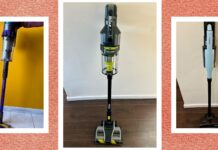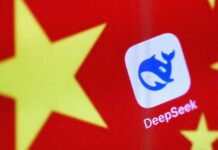Conversations on the final day of this year’s WIRED25 event revolved around the existential mess that has characterized 2020: Covid-19, election integrity, California wildfires. But the experts who came together to share their insights into these problems, and the work they have been doing to confront them, also communicated a sense of genuine optimism.
National Institute of Allergy and Infectious Diseases director Anthony Fauci started off today’s event in conversation with WIRED editor at large Steven Levy. And while Fauci noted some alarming signs—40,000 new US cases each day, an increase in test positivity in some areas—he remains optimistic about an end to the pandemic. He has trust in the vaccine development process, and he thinks we should expect to have proof of a safe, effective vaccine by November or December. But for Fauci, the prospect of a vaccine in the next few months isn’t the only reason to be hopeful. He believes that hope itself is an effective tool in fighting the pandemic. “Despair makes you throw your hands up and say, it doesn’t matter what I do, what’s going to happen is going to happen,” he said. “That is incorrect. It does matter what we do. And if we do it for a while longer, we will look behind us and the outbreak will be behind us, not among us.”
Next, WIRED senior writer Andy Greenberg spoke with Marc Rogers, Nate Warfield, and Ohad Zaidenberg, who cofounded the volunteer group CTI League to protect hospitals and other essential organizations from phishing and ransomware during the pandemic. “It’s almost fair to say that this is a cyber pandemic, because the bad guys, criminal actors, have always exploited big events,” said Rogers. “And there is no bigger event than a global pandemic.” Even when the pandemic ends, however, hospitals, emergency services, and other organizations will still be vulnerable to cyberattacks, and so CTI League is now looking at ways to continue their work going forward.
WIRED senior writer Lily Hay Newman then spoke with another cybersecurity expert, Maddie Stone, who works as a security researcher at Google Project Zero. The goal of Project Zero is to find and eliminate zero-day vulnerabilities—unknown software flaws that could be exploited by hackers. Zero-day vulnerabilities can be difficult to find and use, so hackers deploy them for narrower applications. “They’re really targeted, sophisticated types of attacks, because it takes a lot of expertise to find them and to exploit them,” Stone said. “So they’re usually only used to target high profile, highly valuable targets, such as political dissidents, human rights activists, journalists, things like that.”
Newman stayed online to chat with Ben Adida, the executive director of VotingWorks, which is the only nonprofit maker of US election equipment. Given the complexity of US elections, Adida said, voting machines are a necessity, and they should not be produced by for-profit companies. “We think that elections are the foundation of democracy, and that foundation should be publicly owned,” he said. But despite persistent worries about voting machine hacks and Trump’s constant fear-mongering about voter fraud—including during last night’s presidential debate—Adida believes that the greatest risk to election integrity comes from us. “The biggest concern I have is that a lot of well-meaning folks out there who care about democracy are going to see an alarmist story on their Twitter feed, or in their Facebook feed, and they’re going to say, ‘I need to tell my friends about this,’” he said. “In the process, they become an unwitting participant in this misinformation game of reducing people’s trust in an election outcome.” He left his audience with a stark warning: “If we lose faith in democracy, we lose democracy.”
The world of math offered a more uplifting discussion. WIRED contributor Rhett Allain spoke with Lisa Piccirillo, the MIT math professor who made headlines earlier this year when she solved the decades-old Conway knot problem. Knots, explained Piccirillo, are what you get when you plug together the two ends of a tangled-up extension cord. A whole subfield of abstract math, called knot theory, is devoted to unlocking the mysteries of knots, and for a long time the Conway knot remained stubbornly resistant to analysis. But by devising a similar knot that shared some of its attributes, Piccirillo was able to show that the Conway knot does not have a property called “sliceness”—and she did so in only a week. She thinks that this abstract math style of thinking could perhaps be brought into classrooms. “The math that’s currently taught in schools is very computational,” she said, “That’s not what mathematicians do at all. What we really do is we try to make careful, rigorous arguments about straightforward objects.”
The conversation then turned back to the pandemic, as WIRED service editor Alan Henry spoke with Patrice Peck, a journalist and author of the newsletter “Coronavirus News For Black Folks.” Peck began the newsletter in early April, when it became obvious to her that the Black community would need additional resources during the pandemic. “Once I realized that people with pre-existing medical conditions were at a higher risk to suffer severe illness from coronavirus, that’s when I realized, ‘Okay, this virus is going to really devastate the Black community,’” she said. “Because of anti-Black systemic racism, there is an overwhelming amount of pre-existing medical conditions in the Black community.” At the same time, Peck knew that many Black publications were downsizing or shuttering altogether, and so she took on the responsibility for writing, collecting, and disseminating coronavirus news for Black readers. While undertaking this enormous responsibility, Peck has used therapy and good TV to keep herself going. “I don’t know what use I’m going to be as a journalist and as a member of my community if I’m burnt out and angry and frustrated,” she said.
Next, WIRED staff writer Megan Molteni spoke with Avi Schiffmann, a 17-year-old who created an online Covid dashboard. Schiffmann coded up his tracker back in January, when Covid-19 data was decentralized and difficult to find. “Back when I started this website, there were no other Covid trackers that I could find,” he said. So he decided to make his own tracker, coding up scrapers to compile country-level Covid data and adding new scrapers, or tweaking the old ones, as necessary. Now that the Covid-19 data situation is more stable, Schiffmann is setting his sights on projects to support Black Lives Matter and voting—and he’ll (just barely) be able to vote in the upcoming presidential election.
Like Schiffmann, Audrey Tang, Taiwan’s digital minister, was already doing technology work at a young age—but she left school behind altogether. In conversation with Adam Rogers, a WIRED senior correspondent, Tang—the first transgender government minister in the world—discussed how Taiwan has kept its Covid-19 death toll down to a mere seven. Raising a rainbow mask to her face, Tang highlighted one of the cornerstones of Taiwan’s Covid-19 strategy. “We do have our masks handy, as you can see.” Beyond masks and temperature checks, Taiwan has experienced minimal disruptions. “Otherwise, life is normal,” she said. And Tang’s digital leadership has helped enable this astonishing success. To keep mask distribution efficient and fair, Tang and her colleagues built a system that allows individuals to track mask availability in real-time. Since this system has an open API, anyone can interface with it to manipulate and study those data—as when one legislator demonstrated previously unseen inequalities in the distribution system. For Tang, this public participation in technology development is core to their vision of democracy. “Instead of just receiving and understanding media and messages and narratives, [the public] can be producers of media and messages and narratives,” she said. “We’re not satisfied with only, say, uploading three bits per person every four years—which is called voting, by the way.”
Since the WIRED25 were announced in early September, wildfires have swept through California, burning almost 4 million acres, killing at least 26 people, and destroying over 8,000 structures. So it was only appropriate to add David Saah and LeRoy Westerling to the lineup. Saah is the principal investigator of the Pyregence Consortium, which works to build better wildfire models, and Westerling is the leader of the consortium’s long-term modeling working group. In conversation with Daniel Duane, a WIRED contributor, Saah and Westerling unpacked the reasons for California’s severe wildfires and the ways in which they are trying to fight back. But as wildfires continue to get worse, Westerling doesn’t necessarily think that people are going to leave the hardest-hit areas en masse. “It’s not clear that people are going to abandon the wildland-urban inference or rural areas of California just because of fire,” he said. “California is a big state, it’s got a housing crisis, a shortage of housing, it’s expensive to live in the coastal cities. And then things like Covid are putting pressure on people to spread out more instead of consolidating in already-urbanized areas.” So it’s up to people like Saah and Westerling to continue to protect those communities.
After a day spent discussing thorny problems and innovative solutions, WIRED editor in chief Nick Thompson closed the event by considering how an abstruse math puzzle could help us reevaluate gargantuan issues like the climate and the Covid-19 pandemic. To solve the mystery of the Conway knot, Lisa Piccarillo devised a new, easier-to-understand knot that shared the Conway knot’s most important properties. “It was an amazing metaphor for this whole event,” Thompson said. “If there’s a problem, and it’s an unsolvable problem, how do you turn it around? How do you look at it in a new way?”
More From WIRED25








